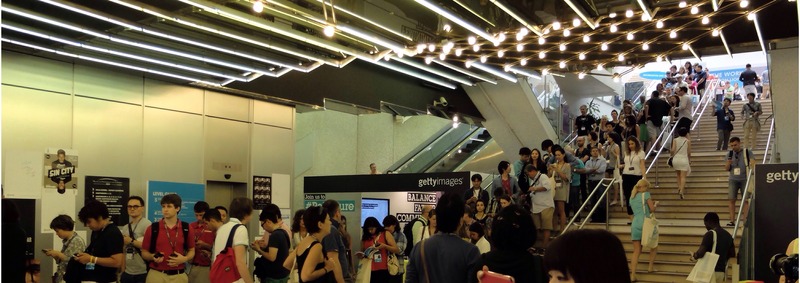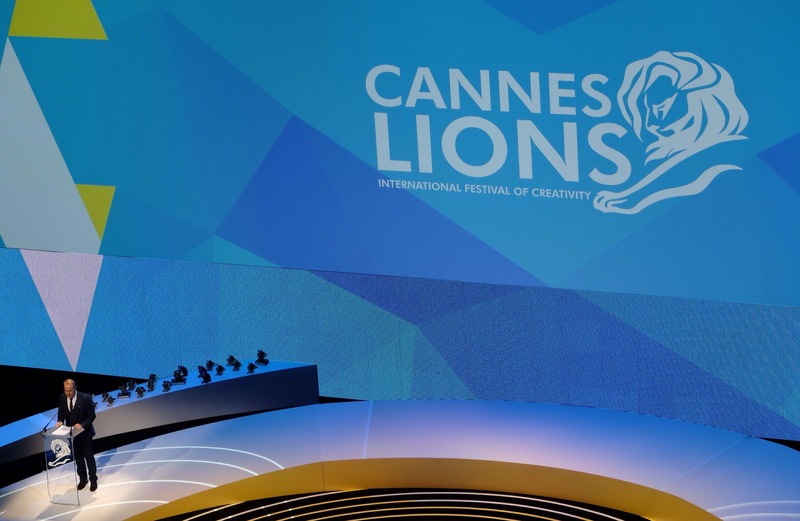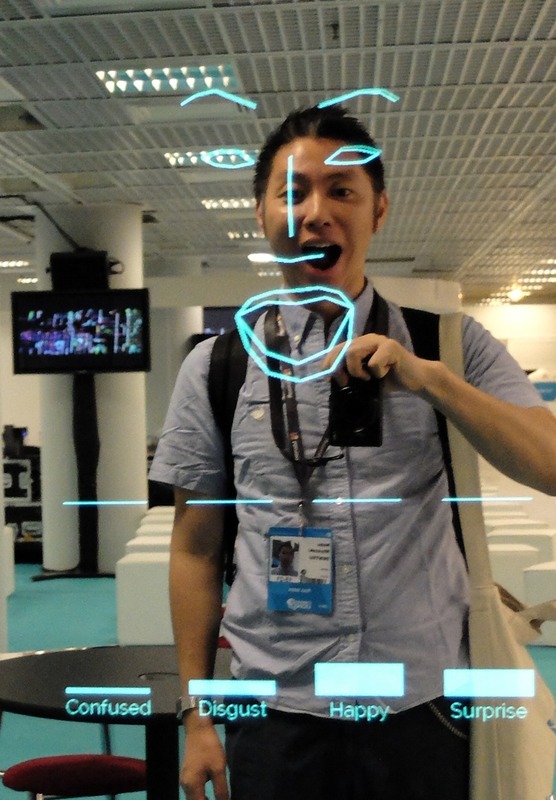The空白領域 and potential for technology and media I saw at Cannes
Cannes Lions 2014 has concluded its full schedule. A full week of experiencing global creativity, discussing it, (eating, drinking) and reflecting on it—it all flew by in the blink of an eye.

In my previous article, I posed the question: What purpose does a media-focused advertising professional serve by coming to Cannes? Now that the entire event is over, I'd like to report on that (this is the experience of someone in media attending Cannes for the first time. Please note there is no evaluation of the awards).
First, a brief summary of the main activities: the core programs were broadly "award judging" and "seminars" (plus "parties," which are crucial networking events held everywhere).
The selection process involves juries composed of top creators from various countries reviewing thousands of entries (over 5,000 in the most popular categories!) across 17 categories over several days to determine and announce the final awards. Each category narrows down to a shortlist (selected entries, roughly 1 in 10) day by day, with the works displayed at the venue. For entrants, the first phase brings a mix of joy and sorrow each morning as they check the shortlist to see if their work remains.
After the shortlist announcements, the Bronze, Silver, Gold, and Grand Prix winners are revealed and honored at the evening awards ceremony. Gold and above winners receive the honor of having their work introduced on stage, receiving their award (a "Lion"), and basking in the audience's applause.
The shortlisted entries are displayed by category at the venue, allowing you to quickly scan the outstanding ideas selected by the world's top judges from thousands of submissions. Many entries are videos, and just watching these roughly two-minute clips makes time fly by.

Seminars take place in theaters also used for the film festival. Advertising agencies, client companies, and media firms present packed content covering the latest case studies and the future of advertising. Popular seminars draw such enthusiastic participation that venues sometimes fill to capacity, requiring live viewing in satellite locations.

Now, let me share what someone from the media observed and thought during Cannes Lions (I've gotten used to calling it that).
Surrounded by Social Good
Throughout the event, I felt an overwhelming abundance of "social good" content. This refers to ideas and initiatives aimed at solving societal problems like poverty, crime, and discrimination. Social good projects came not only from emerging nations but also from developed countries.
However, I noticed that many of these projects had governments or NGOs as clients, and few were integrated into the services or products of regular companies. While I keenly felt that questioning social significance is a universal theme worldwide, it also seems that balancing the execution of such initiatives with conveying a company's message is no easy feat.
Among the many social good entries, some stood out and deserve special mention for media professionals. Due to space constraints, I'll highlight a few below.
Challenging Analog Technology
Throughout the event, I was struck by how technology enables unprecedented expressions, exemplified by the Titanium Grand Prix winner " Sound Of Honda / Ayrton Senna 1989." In my daily work, I sometimes encounter challenging themes like "new projects using technology." In such contexts, "technology" often refers primarily to "digital technology." While I understand the need, digital technology isn't something I'm particularly knowledgeable about... making it a challenging area to dive into.
However, the media × technology ideas I encountered at Cannes weren't just about the latest digital tech; surprisingly, some were quite analog.
For example, one shortlisted entry...
・Newspapers with mosquito repellent mixed into the ink to raise awareness about dengue fever prevention
・Newspapers coated with vinyl to serve as instant umbrellas in rainy regions
・Magazines embedded with power sources and small circuits that turn into searchlights when rolled up
・Magazines with embedded panels displaying life-size smartphone color variations
These projects were highly regarded for actually executing small ideas that could be fully realized within traditional media. Perhaps beyond the effort required to bring such simple, insight-driven ideas to life, there's still room for projects that make you think, "Why didn't I think of that?!"
Media People × Tech People
A recurring theme across multiple award categories was the fusion of "cutting-edge digital" and "traditional media."
The Grand Prix winner in the Mobile category, " Nivea Sunkids Protection Ad," was a Brazilian case where an app using beacons (transmitters) was distributed to alert parents if their young children wandered too far while playing.
The approach involved attaching the child-worn beacon to a mom-focused magazine, delivering it directly to target readers—mothers (who are also the product's target audience). Cutting the beacon from the magazine and wrapping it around the child's wrist, then launching the app, triggers an alert if the child moves beyond a set distance.
This project was shortlisted for the Innovation Lions, giving me the chance to hear the presentation. The person in charge of the project worked closely with the magazine and collaborated with someone with strong tech expertise right beside them. They had previously considered ideas like attaching GPS to magazines, but the equipment was too bulky to implement. The advent of iBeacon made this project possible.
This made me realize that when people deeply familiar with media connect with those knowledgeable about technology, new projects take shape. Technology alone doesn't move people; challenges and insights form the foundation, and technology plays its role in shaping the solution.
While niche compared to social good initiatives, I found it a simple yet effective approach to identify the struggles of mothers with young children, develop an application to solve them, and then deliver it via media that reliably reaches this mother demographic. This setup ensures the product's purpose—protecting children's skin—and the brand's stance are clearly communicated to mothers. As mentioned in several seminars, the observation that in today's world, where infrastructure like SNS connects us globally, outputs that respond to consumer insights—unconstrained by scale—can be one way to change the world, was also encouraging.
Which societal tier's challenges to address?
Engaging with ideas addressing diverse challenges—from social good to mothers' concerns—reveals that issues exist on a hierarchy. Broadly speaking, this hierarchy is: "Society," "Individuals," and "Industry." This isn't about the importance of the issue, but rather the breadth of the foundation that resonates most easily on an international stage. In this regard, social themes tend to garner greater empathy because they possess a high degree of universality that transcends race and gender.
In communication work, we primarily engage with three major areas: "companies/products," "consumers," and the "media" that exists between them. For those like me on the media side, our role involves engaging with media, planning projects, collaborating within industry rules, negotiating, and seeing outputs through to completion. However, this can sometimes mean our engagement with consumer or societal challenges becomes relatively weaker. This observation, born from self-reflection on my daily work, emerged during this inspection: if we can develop solutions that address challenges across various levels, we might achieve influence that transcends mere industry-specific topics (like "industry firsts"). It's quite vague, but after seeing many entries and persistently asking "What problem did this case actually solve?", this thought crystallized. The entries I felt were good plans were those that clearly translated into value for consumers.

While this report leans heavily on media, I also sensed that the scope of discussion at Cannes Lions is expanding rapidly. New categories like Innovation (recently introduced), Product Design (added this year), and Health (though Health became a separate event) are being added. This reflects how creativity-driven problem-solving is spreading across diverse business domains and encourages challenges in these areas. Simultaneously, I believe it signifies that creativity isn't something demanded only of a select few.
Watching the great pioneers honored on the Cannes stage, receiving applause and holding Lions, I thought... how wonderful that must feel. But I imagine that praise is earned by the person who took full responsibility from planning to execution, and the team that saw it through, for their outstanding output. Winning an award itself isn't the goal of our work. Still, I find myself daydreaming about someday standing in that global spotlight myself... Returning to Tokyo, far from the skies and sea of Cannes, I'll push forward in my daily work.
This was a brief report, but thank you for giving me this opportunity.

Was this article helpful?